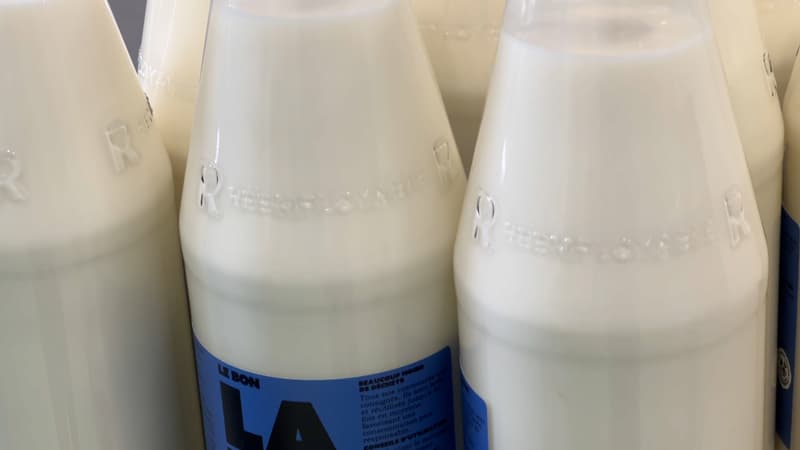Titanium dioxide particles, potential carcinogen in humans, which are prohibited in food, have been found in breast milk, humanized milks and milk sold in commerce, reveal scientific works of Inrae, AP-HP and CNRS published this Wednesday, July 23.
“It is used massively in a multitude of everyday products” (toothpaste, solar creams, drugs, plastics, makeup, paper, paintings …) and is used as a white and opacifying color in food (E171), Titanium dioxide was prohibited as a caution in France in 2020 and then in the European Union in 2022, remembers.
However, his work, published in the journal Science of the Total Environment, shows that this compound has been detected “in humans, animals and children, especially in the form of nanoparticles.”
Maternal, childish and concerning medillas
Titanium dioxide particles have been found in “the maternal milks of ten voluntary women living in Paris or in the nearby suburbs, at variable speeds, certain women with up to 15 times more particles than others”, which shows that this substance “can pass the mammary gland barrier.”
“100% of animal milks (fresh or dust, cows, donkey or goats)”, both of organic and conventional agriculture, and 83% of children’s milks (from commerce, from the first to the elderly, organic or not) analyzed content.
In detail, 6 million to 3.9 billion titanium particles were detected per liter of child milk, and 16 to 348 million per liter in animal milks.
“This inventory of the current milks of the milks reflects the level of exposure of newborns and mothers, but also adult milk consumers,” specifies researchers. And this, despite the prohibition of E171 in food, which suggests “the existence of others” that food pollution emphasizes.
Potential carcinogen since 2006
Titanium dioxide has been classified as a possible carcinogenic in humans by inhalation since 2006, recalls the scientists of INRAE (National Institute for Research of Agriculture, Food and Environment), AP-HP (Public Assistance-Hospital of Paris), Synchrotron Soleil and CNRS, the National Center for Scientific Research.
The authors of this study wanted to better evaluate “the impact of this massive release of titanium dioxide on living beings” and “real exposure of animals and humans.”
It had already been shown that the nanoparticles present in the additive E171 crossed the placenta. This work can serve as a basis for future toxicity studies.
Source: BFM TV


